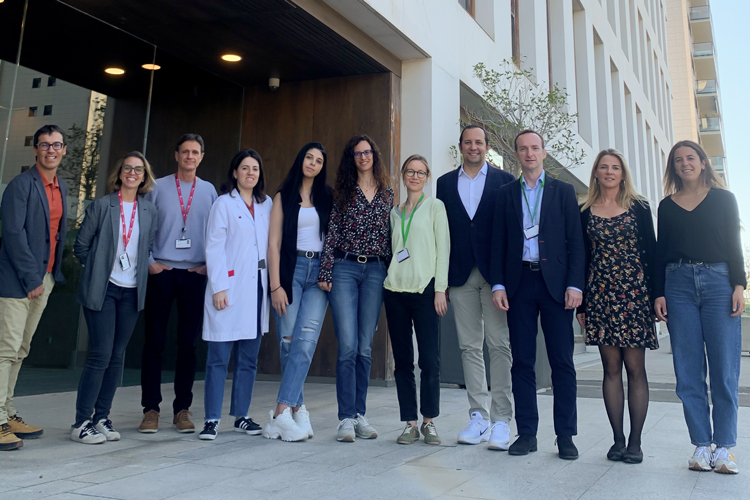This research promoted by BST, IGTP, and IQS could lead to a therapeutic and innovative alternative that aims to obtain a human-origin biological bioimplant called VASCRAFT for coronary bypass.

One of the most widely practiced cardiovascular health interventions, coronary bypasses could undergo a revolutionary innovation with the joint research carried out by the Blood and Tissue Bank (BST), the Germans Trias i Pujol Research Institute (IGTP), and the Vascular Engineering and Applied Biomedicine Group (GEVAB) at IQS (URL). The three centres are working to develop a vascular graft using donor veins, which serve to make the "bridge" or bypass in heart interventions and thus recover blood flow.
Heart patients who need to undergo a coronary bypass could avoid both short and long-term complications derived from the removal of part of a vein from the legs, the saphenous vein, which serves as their own graft to be able to replace the blocked area of the coronary artery and revascularize the heart. Less frequently used, artificial grafts often present problems such as the formation of clots and are not a very effective alternative in the long term.
The VASCRAFT graft, a multidisciplinary consortium of experts
The three participating institutions form a multidisciplinary team of experts in areas such as cell biology, biotechnology, chemical engineering, tissue engineering, medicine, and cardiac surgery. They are united under the banner of the VASCRAFT consortium, which gives its name to the VASCRAFT graft.
The first phase of the process is being led by the Blood and Tissue Bank, with the decellularization of a human vascular graft from the saphenous veins of a deceased donor. This involves vascular structure cells from this tissue being removed to avoid possible rejection.
In parallel, the GEVAB group at IQS is responsible for the recellularization of the graft to re-form endothelium from human mesenchymal cells, or umbilical cord stem cells obtained from the BST. This is possible thanks to the experience of these IQS researchers in culturing vascular cells in different biological and synthetic tubular ducts through the use of perfusion bioreactors.
Finally, the IGTP researchers are addressing the clinical application of the graft with the validation of its functioning in a preclinical porcine model. From this point on, and if validated by the research, clinical trials in humans could be launched in order to effectively use it in coronary surgery interventions.
In addition to the scientific impact and technological innovation that obtaining vascular grafts available for bypasses could entail, it is also worth highlighting the reduction in healthcare costs that reinterventions for coronary obstructions currently entail.
This research has a planned duration of three years and is being supported by the Ministry of Science and Innovation with funding from the European Union within the 2022 Public-Private Partnership Project Plan.










